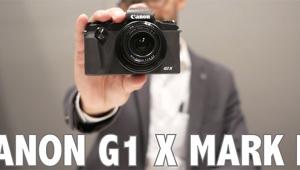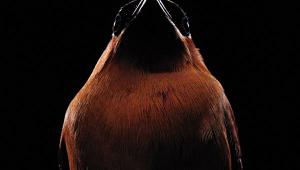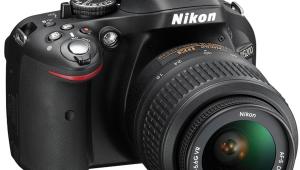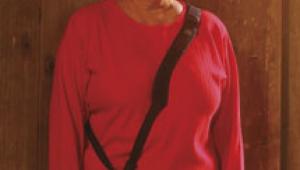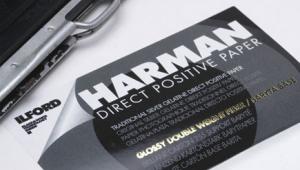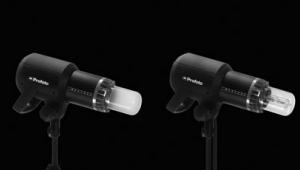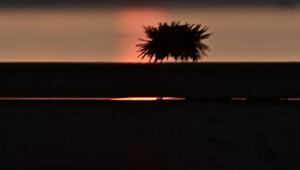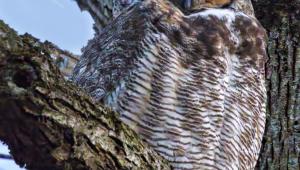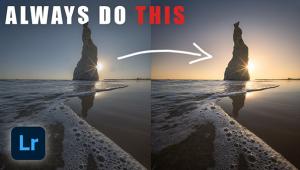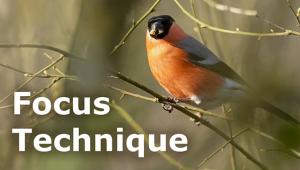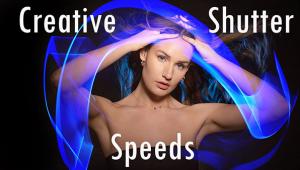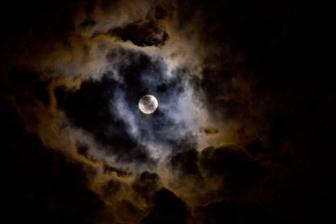Special Report: photokina
Cameras: Medium And Large Format Update & A New (And Old) Rangefinder 35
The most vibrant growth sector in high-end film cameras was undoubtedly rangefinder,
with a completely new model from Zeiss and two substantially revised models
from Voigtländer: I have already covered Leica a la carte elsewhere.
The lenses for the new Zeiss Ikon are really exciting: Distagon 15mm f/2.8,
Biogons for 21mm f/2.8, 25mm f/2.8, 28mm f/2.8, and 35mm f/2; Planar 50mm f/2;
and Sonnar 85mm f/2. These are all completely revised designs, not re-mounts
of existing Contax G-series lenses, and they can deliver 400 lp/mm on the film--though
you need microfilm to do it, and because it is impossible to build a 35mm camera
to hold film sufficiently flat, you will need to bracket focusing to do so,
twisting the mount a fraction closer and a fraction farther away to see which
gives the best results.

The only drawback to the camera, as far as I am concerned, is that the shutter
is completely electronic with no mechanical speeds: no battery, no pictures.
Although autoexposure is a useful option, absolute battery dependency is not
a price I am happy to pay, the more so as I would normally use only the manually
set speeds (1 second to 1/2000 sec) anyway. I'm looking forward to getting
a Zeiss Ikon for review, but I shall continue to lobby them to make a fully
mechanical model as well: I am certain that this is possible. Lenses from 21-50mm
should already be available when you read this, with the camera and the 15mm
and 85mm available in April 2005 or thereabouts. Outside Japan it will be distributed
worldwide by Hasselblad (www.hasselbladusa.com).
It is something of an open secret that the Zeiss Ikon body, and all the lenses
except the 15mm f/2.8 and 85mm f/2, are made by Mr. Kobayashi of Cosina-Voigtländer
(www.cosina.co.jp), who
will distribute the system inside Japan. The camera is, however, a completely
new chassis, not a rehash of the existing Voigtländer Bessa series, and
(like the old Contax IIa/IIIa) it has a slightly longer rangefinder base than
the current Leica--though with a .74x magnification the effective base
length is slightly less than on an 0.85x Leica.

At Voigtländer, the R2 has been dropped and replaced with the R2a and R3a,
with improved rewind and viewfinders and the same electronically controlled
shutter as the Zeiss Ikon. The R3a has an almost life-size viewfinder and a
new 40mm f/1.4 lens--arguably the finest "standard" focal length
for 35mm and surely a must-have for users of the Leica CL and Minolta CLE. But
again I suggested to Kobayashi-san that there should be an R2b and R3b with
mechanical shutters and he did not rule out the idea. I also saw a prototype
18mm f/4 Voigtländer Color-Skopar in Leica thread (39mm x 26 tpi) which
should be available two or three months after you read this.
Medium Format
Moving on to medium format, it is well-known that Bronica (www.tamron.com) has
left the SLR market (but continues to make rangefinder cameras) and that Pentax
(www.pentaxusa.com) plans no great introductions: as they said to me at photokina,
the medium format cameras are "dead." At the time of this writing
Pentaxes were still in production and looked set to stay that way, or at least,
that was the Party Line. From what I hear from major dealers the 67 is all but
immortal and continues to sell but the 645 is moribund.
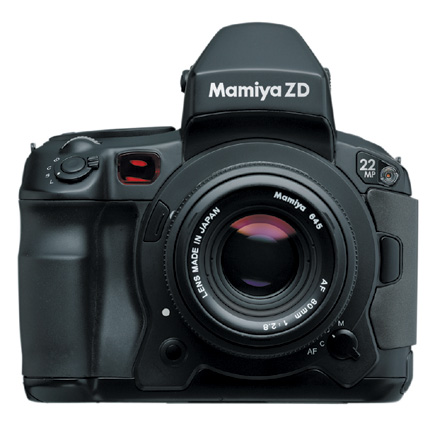
This is no surprise. The 645 format was always a sort of "super 35mm"
and has felt the impact of digital--inferior quality, but much greater
convenience--even more than the other medium formats. The 6x7 format is
considerably better placed but there are innumerable used cameras on the market
and new sales are very sluggish indeed, at least among the Big Names.
On the other hand, the specialized medium format market looks surprisingly buoyant.
Alpa (www.badgergraphic.com)
had a "new" lens, the legendary 90mm f/3.5 Linhof Technikon by Rodenstock.
These are new, old stock lenses that are completely remanufactured before being
placed in Schneider/Alpa focusing mounts. Alpa also had eccentrically mounted
lenses for "instant shift": the Alpa mount is square, so the offset
panel can be installed in four orientations, allowing 8mm of rise or fall or
left or right shift, a total of 16mm movement. Lenses available this way are
the 38mm f/5.6 Schneider Super Angulon and 48mm f/5.6 APO-Helvetar. Then there
are Alpa extension tubes in 16, 34, and 52mm, at a stiff $454, $477, and $544,
respectively. These are however manufactured to tolerances all but unknown elsewhere,
and the latest digital back adapters ($765-$883) are
shim-adjustable to allow precise sensor location to 0.01mm or thereabouts: about
1/3 of a thousandth of an inch. Most people do not realize that this is the
kind of accuracy you need with digital sensors if you want maximum sharpness.

There were three new 6x12 or 6x17 wide angle cameras. The Walker/Canham (www.bromwellmarketing.com)--617
only--had the most sophisticated back by a very long way; the Fotoman (www.badgergraphic.com)--612
and 617--represented extraordinary value at $1600 or so for a complete
camera minus lens; and the Shen-Hao (www.shen-hao.com)
was the roughest, and pricing was uncertain. And Dr. Gilde (www.gilde-kamera.de),
the only man who makes more expensive consumer-oriented cameras than Alpa, had
a new 6x23 back: that's 3-on-120. Then there was a new Noblex (www.rtsphoto.com)
rotating-lens panoramic camera, the 6/150 FS, falling between the 6/150 E2 and
the 6/150 UX. Like them it delivers 6-on-120 with an image size of 50x120mm
and an angular coverage of 146Þ.

In digital "medium format," too, there were two surprises. One
was a new Mamiya ZD (www.mamiya.com),
a big brute of a camera but not a lot larger than the current generation of
vast 35mm and multi-megapixel SLRs. It offers 22 megapixels. This genuinely
does compete with or even surpass 35mm, but it is (to be generous) disputable
whether 22 megapixels begins to approach 645 film in potential resolution, let
alone 6x7cm or bigger. At the right price--and rumor placed the Mamiya
only a couple of thousand bucks above the highest-megapixel Canon--they
should however be onto a winner with their 36x48mm chip and a camera that accepts
all the old 645 lenses, auto or manual focus, with metering, and a 1/4000 sec
top speed. The same capture hardware is available as a detachable back for the
RZ67 and (possibly) for some other cameras.
- Log in or register to post comments




